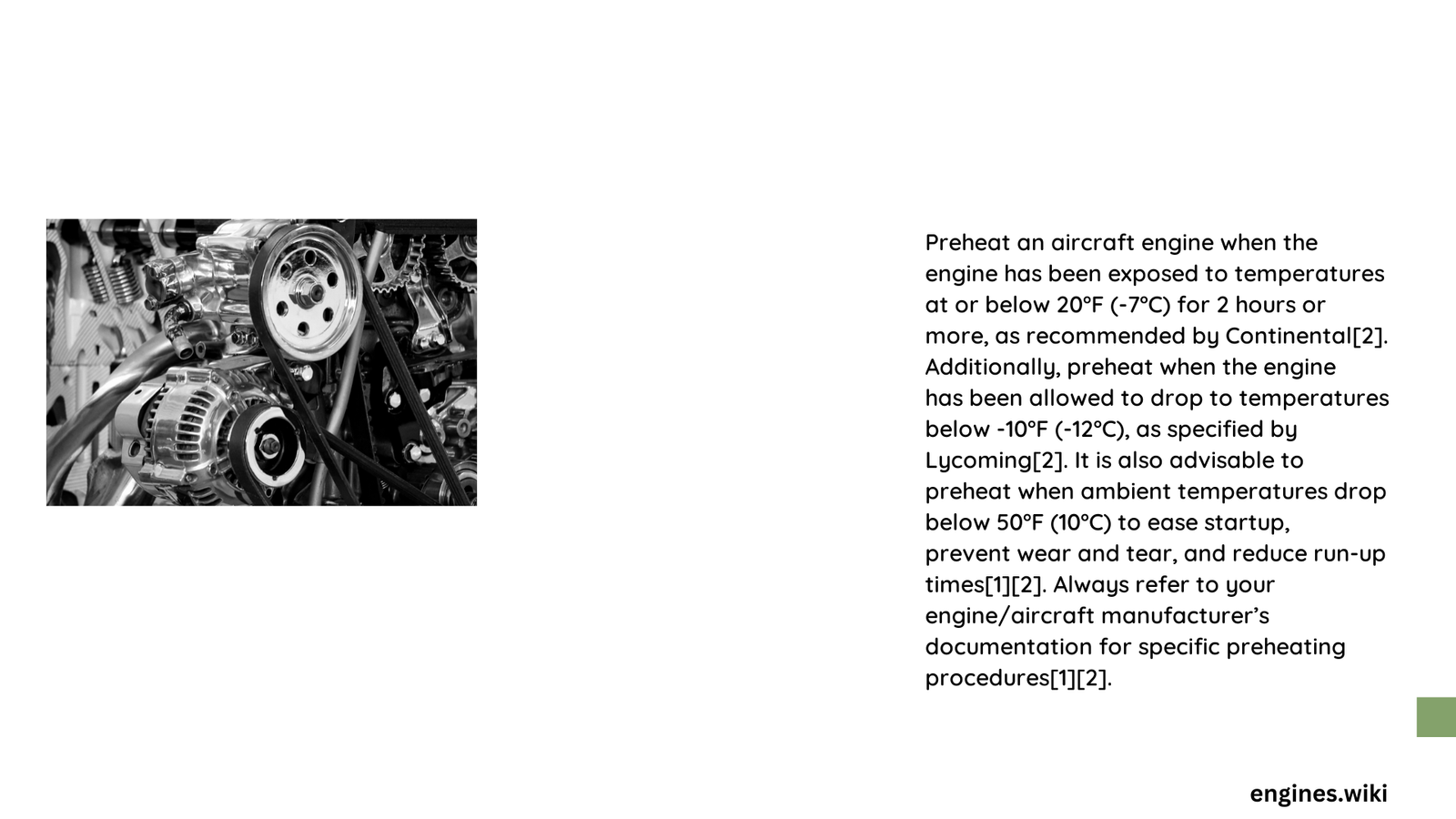Aircraft engine preheating is a critical maintenance procedure that protects your engine’s integrity during cold weather operations. Understanding precise temperature thresholds and implementing strategic preheating techniques can significantly reduce mechanical wear, prevent potential damage, and ensure reliable engine performance across varying environmental conditions.
What Are the Critical Temperature Thresholds for Aircraft Engine Preheating?
Temperature Guidelines for Different Engine Types
| Engine Type | Preheat Recommended Below | Minimum Safe Temperature |
|---|---|---|
| Lycoming Standard Models | 10°F (-12.2°C) | 20°F (-6.7°C) |
| Lycoming 76 Series | 20°F (-6.7°C) | 32°F (0°C) |
| Continental Engines | 20°F (-6.7°C) | 25°F (-3.9°C) |
Why Temperature Matters in Engine Preheating
Preheating becomes crucial when ambient temperatures approach freezing because:
- Oil Viscosity Changes: Cold temperatures increase oil thickness, reducing lubrication efficiency
- Metal Component Contraction: Engine parts contract in cold conditions, creating potential alignment issues
- Battery Performance: Cold temperatures reduce battery cranking power
How Long Should You Preheat an Aircraft Engine?

Preheating Duration Factors
- Ambient Temperature
- Below 10°F: 45-60 minutes recommended
- 10-32°F: 30-45 minutes recommended
-
Above 32°F: 15-30 minutes recommended
-
Preheating Method
- Electric Blanket Systems: Continuous heating possible
- Forced Air Heaters: Intermittent heating required
- Portable Heaters: Direct, targeted warming
What Are the Risks of Inadequate Preheating?
Potential Consequences of Cold Starts
- Increased Engine Wear: Equivalent to 500 hours of normal operation
- Potential Cylinder Scoring: Insufficient lubrication can cause permanent damage
- Extended Starter Motor Strain: Higher electrical load during cold starts
- Reduced Fuel Efficiency: Incomplete fuel combustion
What Preheating Methods Are Most Effective?
Recommended Preheating Techniques
- Electric Engine Blankets
- Provides uniform heat distribution
- Minimal risk of localized overheating
-
Easy to install and maintain
-
Forced Air Heaters
- Flexible positioning
- Quick heating capabilities
-
Suitable for remote locations
-
Combination Approaches
- Use multiple heating sources
- Monitor engine temperature consistently
- Ensure even heat distribution
How to Optimize Your Preheating Process?
Best Practices for Aircraft Engine Preheating
- Always check manufacturer’s specific guidelines
- Use calibrated temperature monitoring equipment
- Protect engine compartment during heating
- Avoid prolonged heating to prevent potential corrosion
- Perform regular maintenance checks
Conclusion
Proper aircraft engine preheating is not just a recommendation—it’s a critical safety and maintenance procedure. By understanding temperature thresholds, utilizing appropriate preheating methods, and following manufacturer guidelines, pilots can significantly extend engine life and ensure reliable performance.
